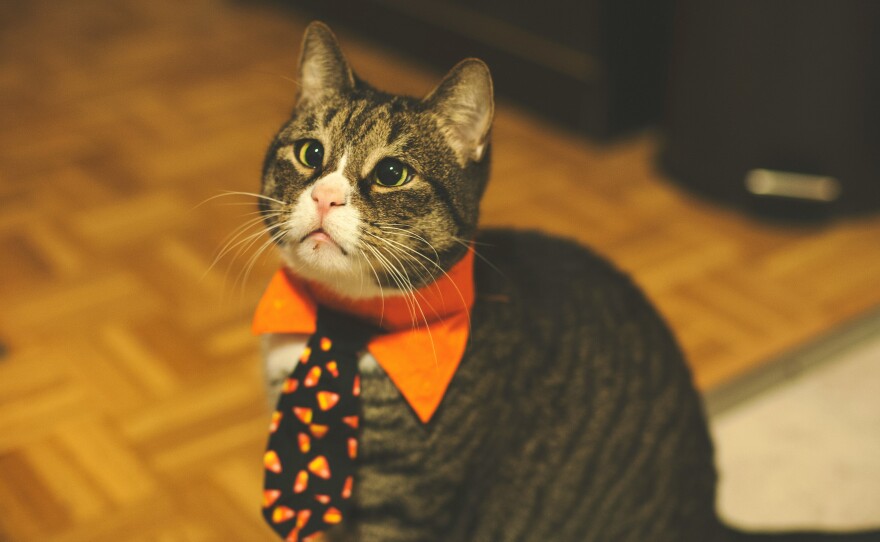Americans are expected to spend a record $13.1 billion on Halloween this year, up a billion and a half from last year, according to the National Retail Federation.
Costumes, decorations and candy — those are the three big items driving Halloween spending this year, according to Curtis Dubay, the chief economist for the U.S. Chamber of Commerce.
People are predicted to spend billions on costumes for kids and adults, but he said $860 million dollars will be spent on costumes for pets, according to data from the NRF.
“To spend almost a billion on pet costumes is definitely something that’s eye-catching,” Dubay said. “I think it’s part of a broader trend that we’re spending a lot more on pets than we used to.”

More pets, and more people, are celebrating Halloween. A survey found that 73% percent of people plan to celebrate Halloween this year. That’s up from about half in 2005.
There’s been an uptick of people celebrating secular holidays in the U.S., said Jay Zagorsky, an economics professor at Boston University. He researches holidays and how people spend money.
“As the United States becomes more of a society with lots of different religions and lots of different people over the past decades, we’re trying to come up with holidays that are not religious, but that are very inclusive,” Zagorsky said.
Halloween decorations are also showing up in stores sooner.
In the past, Halloween was a relatively small holiday, and retailers didn’t have much incentive to stock shelves ahead of time, Zagorsky said.
Now, Zagorsky and Dubay both say Halloween is big business, and spooky stuff is hitting the shelves during the summer, even before back to school supplies.
“When I was a kid, it was the basic generic costumes, vampires and werewolves,” Dubay said. “Now, you have any number of costumes running the gamut.”
Whether it’s niche anime characters or outfits from summer movie hits like “KPop Demon Hunters,” businesses are adapting to get a huge variety of costumes into stores by Halloween, he said.
“Instead of just a single day or one weekend of events, Halloween has really evolved into an entire season of its own,” said Katherine Cullen, the NRF’s vice president of industry and consumer insights, in a Halloween Q&A session.
Spending for All Hallows Eve could also foretell how strongly consumers will spend during the upcoming holiday season, Dubay said.


